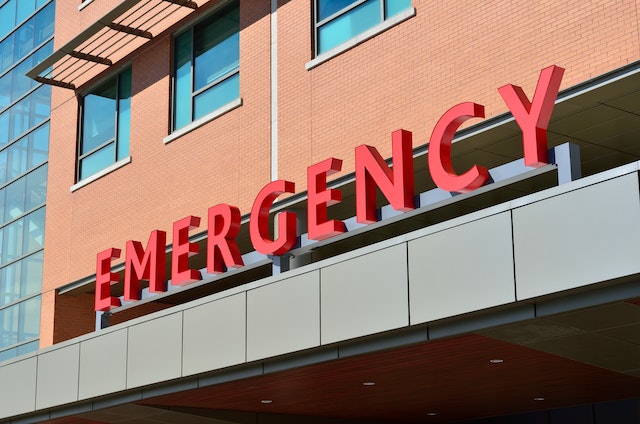Medical emergencies can happen at any time, but the cost of an emergency room visit without insurance can be a major source of stress. Whether you’re uninsured or your insurance doesn’t cover emergency room visits, you may be wondering, “How much is an emergency room visit without insurance?”
In this article, we’ll explore the costs of emergency room visits, discussing the factors that affect the price and ways to reduce your expenses.
Whether you’re facing a medical emergency or just planning ahead, read on to discover everything you need to know about the cost of emergency room visits without insurance.
Table of Contents
Understanding the Cost Structure
Before diving into the specifics, it’s important to understand how the cost structure of emergency room visits is determined.
Emergency rooms are designed to provide critical and immediate care, often for life-threatening conditions.
Due to the urgency and complexity of the care provided, the costs tend to be significantly higher compared to other healthcare settings.
Facility Fees
One of the primary components of the cost structure is the facility fee. This fee covers the overhead expenses of operating an emergency room, including staffing, equipment, supplies, and administrative costs.
The facility fee is usually a flat rate charged by the hospital or healthcare facility, regardless of the services rendered or the severity of the condition.
Medical Services
In addition to the facility fee, the cost of medical services provided during the emergency room visit also contributes to the overall expense.
This includes the evaluation by the healthcare professionals, diagnostic tests, treatments, medications, and any procedures performed to stabilize the patient’s condition.
The Average Cost of an Emergency Room Visit Without Insurance
The cost of an emergency room visit without insurance can fluctuate depending on various factors, including the location, the severity of the condition, and the services provided.
It’s important to note that these figures are rough estimates and can significantly differ from one case to another. However, they can give you a general idea of what to expect.
As per a study by the Health Care Cost Institute, the average expense of an emergency room visit in the United States was approximately $1,389 in 2017.
However, this figure can be substantially higher for complex cases or in areas with a high cost of living.
To break down the costs further, the facility fee alone can range from $300 to $3,000 or more, depending on the hospital and location.
On top of that, medical services such as diagnostic tests, X-rays, laboratory work, medications, and procedures can add thousands of dollars to the bill.
It’s also worth mentioning that additional charges may apply if specialized consultations or surgeries are required.
Negotiating the Bill
While facing a hefty medical bill without insurance may seem overwhelming, it’s important to remember that you are not completely powerless.
In many cases, hospitals and healthcare providers are willing to negotiate the bill or offer financial assistance programs to help individuals manage the costs.
Communicate with the Billing Department
As soon as you receive the bill, it’s essential to reach out to the hospital’s billing department and explain your situation.
Be open and honest about your financial constraints and ask if they have any options available for uninsured patients.
Some hospitals may offer payment plans, discounted rates, or even charity care programs based on your income and assets.
Seek Assistance from Nonprofit Organizations
Numerous nonprofit organizations and foundations exist to assist individuals in need of medical care. These organizations can provide guidance, financial aid, or connect you with resources that can help alleviate the burden of the medical bill. It’s worth exploring these avenues and finding out if you qualify for any assistance programs.
Consider a Medical Bill Advocate
If you find it challenging to navigate the billing process and negotiate on your own, you may consider hiring a medical bill advocate.
These professionals specialize in reviewing medical bills, identifying errors or overcharges, and negotiating with healthcare providers on behalf of the patient.
They have experience in dealing with medical billing and can potentially reduce the overall cost of your emergency room visit.
While hiring a medical bill advocate comes with a cost, their expertise can often outweigh the expense by saving you money in the long run.
Exploring Alternatives to Emergency Room Visits
Emergency room visits are undoubtedly essential in life-threatening situations. However, in some cases, there may be alternatives to consider that can provide you with the necessary care at a lower cost.
Urgent Care Centers
For non-life-threatening conditions that still require prompt attention, visiting an urgent care center can be a more cost-effective option.
Urgent care centers are equipped to handle a wide range of illnesses and injuries, including minor fractures, infections, and common ailments.
They often have shorter wait times and lower fees compared to emergency rooms. Before seeking care, it’s advisable to call ahead and inquire about their pricing and payment options.
Retail Clinics
Retail clinics, often found in pharmacies or grocery stores, are another alternative for minor ailments and basic healthcare services.
Usually, these clinics are staffed by nurse practitioners or physician assistants who can diagnose and treat common illnesses, provide vaccinations, and conduct regular screenings.
Retail clinics are known for their affordability and convenience, and they often accept cash payments or offer discounted rates for uninsured individuals.
Community Health Centers
Nonprofit organizations known as community health centers provide comprehensive healthcare services, including primary care, dental care, and mental health services, to underserved populations.
These centers operate on a sliding fee scale based on income, meaning that the cost of care is adjusted according to your financial situation.
If there is a community health center in your area, reaching out to them for non-emergency care can be a viable option.
The Importance of Obtaining Health Insurance
While emergencies can happen unexpectedly, it’s crucial to consider securing health insurance coverage to protect yourself from exorbitant medical expenses.
Health insurance provides financial security and access to a network of healthcare providers, ensuring that you receive necessary care without facing overwhelming bills.
Employer-Sponsored Health Insurance
A lot of employers provide health insurance benefits to their employees as a component of their compensation package. If you’re employed, it’s worth exploring the options provided by your employer.
These plans often have a more affordable premium compared to individual plans and can provide coverage for emergency room visits and other medical services.
Government Programs
Government programs like Medicaid and the Children’s Health Insurance Program (CHIP) can offer individuals with low income or specific qualifying conditions the opportunity to acquire affordable or free healthcare coverage.
Eligibility requirements vary by state, so it’s essential to research and determine if you qualify for these programs.
Individual Health Insurance Plans
If you’re self-employed, unemployed, or not eligible for employer-sponsored or government-provided coverage, individual health insurance plans are available through the Health Insurance Marketplace.
These plans offer a range of coverage options at different price points, allowing you to choose a plan that fits your needs and budget.
It’s advisable to carefully review the terms, coverage limitations, and premium costs of each plan before making a decision.
Prioritizing Your Health and Finances
While the cost of an emergency room visit without insurance can be daunting, it’s important to prioritize your health above all else. In emergencies, seeking immediate medical attention should always be your primary concern.
However, taking proactive steps to secure health insurance coverage and exploring alternatives to emergency room visits can help mitigate the financial burden.
Remember to communicate openly with healthcare providers, seek financial assistance when needed, and educate yourself about available resources.
By staying informed and proactive, you can navigate the challenges of uninsured emergency room visits and make informed decisions that protect both your health and your finances.
Conclusion
Facing an emergency room visit without insurance can be a stressful and financially burdensome situation.
However, understanding the cost structure, exploring negotiation options, and considering alternatives can help alleviate some of the financial strain.
It’s important to communicate with the billing department, seek assistance from nonprofit organizations, and consider hiring a medical bill advocate if needed.
Furthermore, exploring alternatives such as urgent care centers, retail clinics, and community health centers can offer more cost-effective options for non-life-threatening conditions.
It’s crucial to prioritize obtaining health insurance coverage to protect yourself from exorbitant medical expenses.
Employer-sponsored health insurance, government programs, and individual health insurance plans are all potential avenues to explore based on your circumstances.
While the cost of healthcare can be overwhelming, it’s essential to remember that your health should always be the top priority. Seeking immediate medical attention in emergencies is crucial, regardless of insurance status.
By being proactive, informed, and resourceful, you can navigate the challenges of emergency room visits without insurance and make the best decisions for your health and financial well-being.
Remember, if you find yourself in a situation without insurance during an emergency, stay calm, reach out for assistance, and explore all available options to ensure you receive the care you need while also managing the associated costs.
Your health matters, and there are resources and support systems in place to help you during challenging times.







